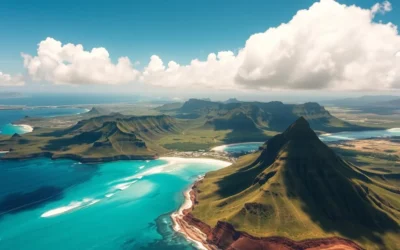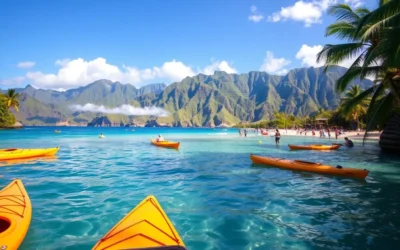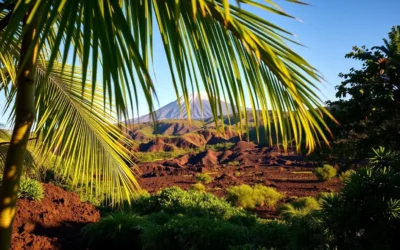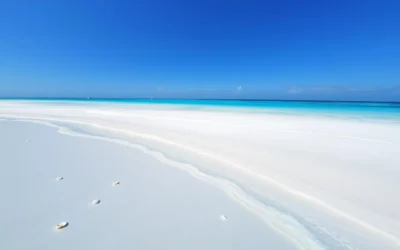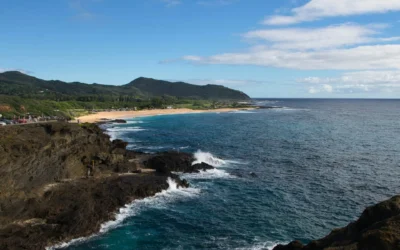✓ Accommodations✓ Flights✓ Rental Cars✓ Tours & Activities
You’ve probably heard of Hawaii’s stunning natural beauty, but have you considered visiting Kaloko-Honokohau National Historical Park on the Big Island? This coastal treasure is a must-see for anyone interested in ancient Hawaiian culture and history.
As you explore the park, you’ll uncover the rich history and significance of this unique site. Established in 1978, the park preserves the coastal sections of two traditional land divisions, or ahupua’a, showcasing how native Hawaiians managed resources sustainably.
From ancient fishponds and historic settlements to petroglyphs and pristine beaches, this park offers an unforgettable experience that combines cultural immersion, wildlife viewing, and scenic beauty.
Discovering Kaloko-Honokohau National Historical Park
As you step into Kaloko-Honokohau National Historical Park, you’re not just visiting a site – you’re experiencing a rich tapestry of Hawaiian history and culture. This unique national historical park is a testament to the spiritual and cultural significance of the area to the ancient Hawaiians. The park’s name itself reflects its importance, with “Kaloko” meaning “pond” and “Honokohau” meaning “the bay where waters congregate.”
Park Overview and Significance
The park preserves a remarkable collection of archaeological sites that reveal the history and traditions of the Hawaiian people. You can explore ancient fishponds, temples, and other cultural sites that demonstrate the ingenuity and spiritual connection of the ancient Hawaiians to this rugged coastal area. The park’s significance extends beyond its historical sites, as it continues to be a place of spiritual importance for Native Hawaiians today.
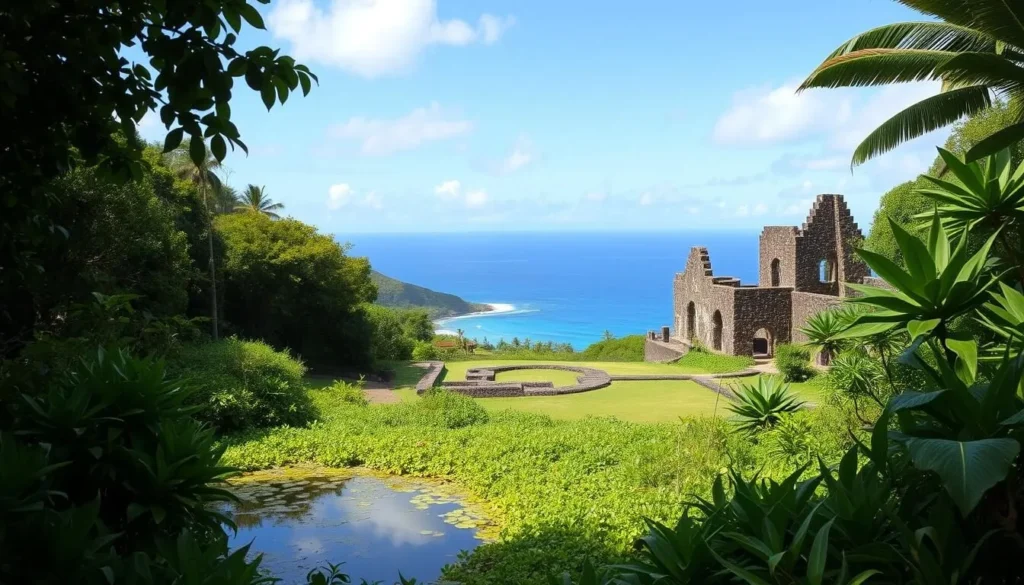
Native Hawaiian Cultural Importance
The native Hawaiians considered this area highly spiritual, believing that every element of the land and sea held sacred significance. The park served not just as a settlement but as a spiritual and cultural center for Native Hawaiian communities. You can appreciate the deep connection between the Hawaiian people and this landscape, which informed their sustainable resource management practices.
- Understand the spiritual significance of the area to native Hawaiians, with its sacred land and sea elements.
- Learn about the meaning behind the park’s name and its reflection of the area’s important water resources.
- Discover the role of the park as a spiritual and cultural center for Native Hawaiian communities.
- Appreciate the connection between the Hawaiian people and the landscape, and their sustainable practices.
- Understand how the park preserves living cultural traditions important to Native Hawaiians today.
Rich History of Kaloko-Honokohau
As you explore Kaloko-Honokohau National Historical Park, you’ll uncover a rich history that spans centuries. This national historic park is a testament to the ingenuity and resilience of the ancient Hawaiians who called this coastal area home.
Ancient Hawaiian Settlements
The area now known as Kaloko-Honokohau has been inhabited since around 1200 AD, with evidence of early Hawaiian settlements scattered throughout the park. These early inhabitants were drawn to the area’s abundant marine resources and the fertile soil surrounding the lava flows.
Traditional Land Divisions (Ahupua’a)
The land was divided into ahupua’a, traditional land divisions that stretched from the sea to the mountains, providing a sustainable system for managing resources. The petroglyphs scattered among the area tell a deeper story into the sense of community and life among the ahupua’as.
Archaeological Sites and Petroglyphs
You can explore numerous petroglyphs (rock carvings) throughout the park, which provide visual insights into ancient Hawaiian life, beliefs, and community practices. Archaeologists have uncovered various sites, including dwelling foundations, heiau (temples), and work areas, revealing the complexity of ancient Hawaiian society.
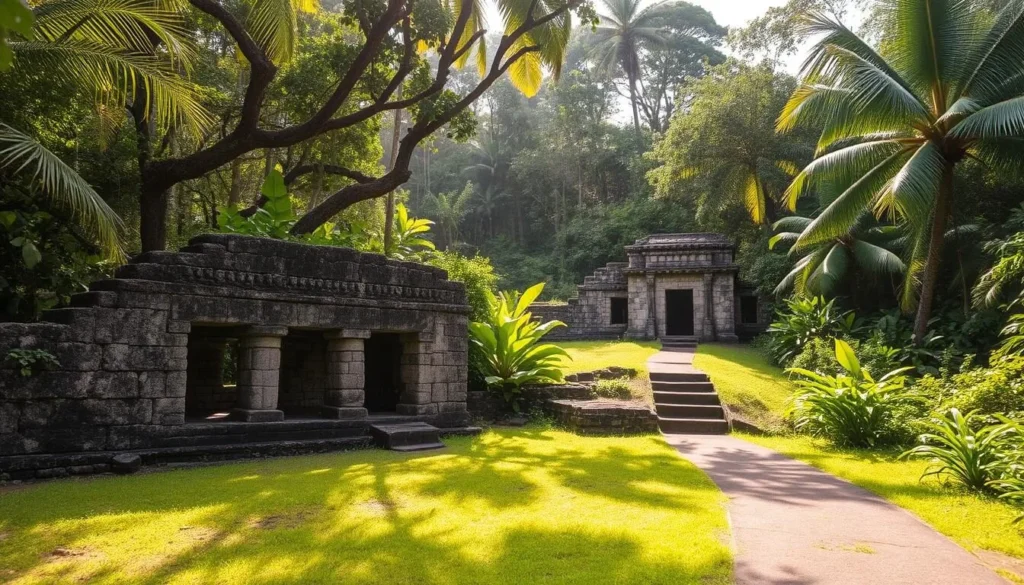
| Site Type | Description | Significance |
|---|---|---|
| Petroglyphs | Rock carvings depicting various images | Provide insights into ancient Hawaiian life and beliefs |
| Dwelling Foundations | Remains of ancient homes | Reveal the layout and structure of ancient Hawaiian settlements |
| Heiau (Temples) | Ancient religious structures | Demonstrate the spiritual practices of ancient Hawaiians |
By preserving these archaeological treasures, we can gain a deeper understanding of Hawaii’s rich cultural heritage and the history that makes this park so unique.
Planning Your Visit to Kaloko-Honokohau National Park, The Big Island, Hawaii
Your adventure to Kaloko-Honokohau National Historical Park on the Big Island, Hawaii, begins with planning your visit. To make the most of your time at this historical site, understanding the park’s location, operating hours, and the best time to visit is crucial.
Location and Getting There
Kaloko-Honokohau National Historical Park is located on the Big Island of Hawaii. To get there, you can take Highway 11, then proceed on Highway 19 towards Kailua-Kona. The park is well-signposted, making it relatively easy to find. Visitors often come from nearby resorts and towns, making it a convenient day-trip destination.
Operating Hours and Entrance Fees
The park is open from 8:00 AM to 5:00 PM daily. It’s advisable to check with the park visitor center for any updates on operating hours or special closures before your visit. There is an entrance fee, which helps in the maintenance and preservation of the park’s cultural and natural resources.
Best Time to Visit
The best time to visit Kaloko-Honokohau is during the drier months from May to October. During this period, visitors can enjoy favorable weather conditions, ideal for hiking and exploring the cultural sites. Early mornings or late afternoons are recommended for cooler temperatures and better photography lighting.
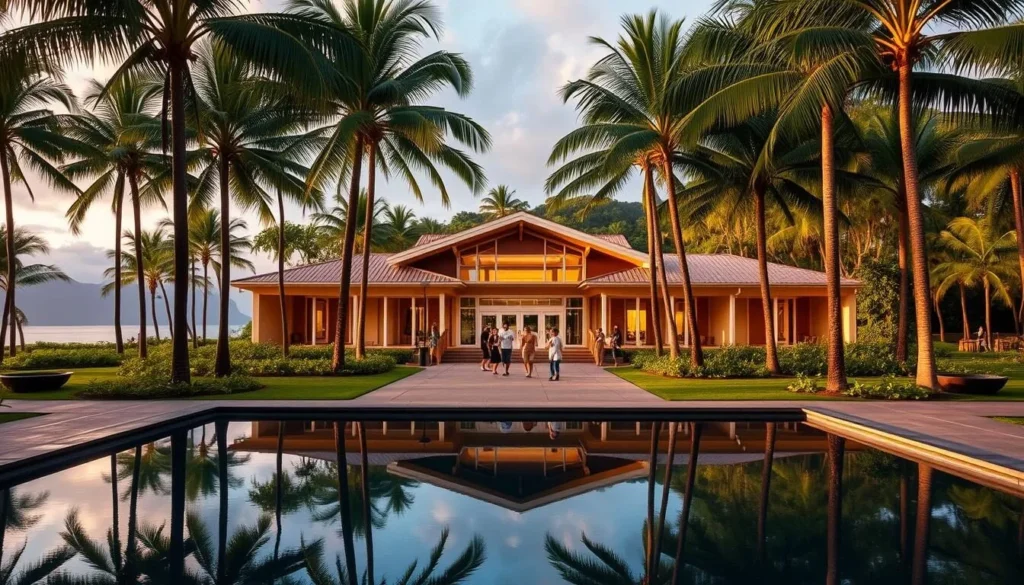
To enhance your experience, consider visiting during low tide to explore the fishponds and coastal features. Avoiding peak tourist seasons can also result in a more serene experience. Checking with the park visitor center for special ranger-led programs can add value to your visit.
Must-See Attractions Within the Park
As you explore Kaloko-Honokohau National Historical Park, you’ll discover a wealth of attractions that showcase the rich cultural heritage and natural beauty of this unique Hawaiian site. The park is home to several significant historical and natural attractions that are sure to captivate visitors of all ages.
Kaloko and Aimakapa Fishponds
The Kaloko and Aimakapa Fishponds are two of the park’s most notable attractions. These ancient fishponds, constructed by Native Hawaiians, demonstrate sophisticated aquaculture techniques and highlight the community’s reliance on the ocean for sustenance. As you walk along the fishponds, you can appreciate the intricate stonework and the importance of these structures in Hawaiian history.
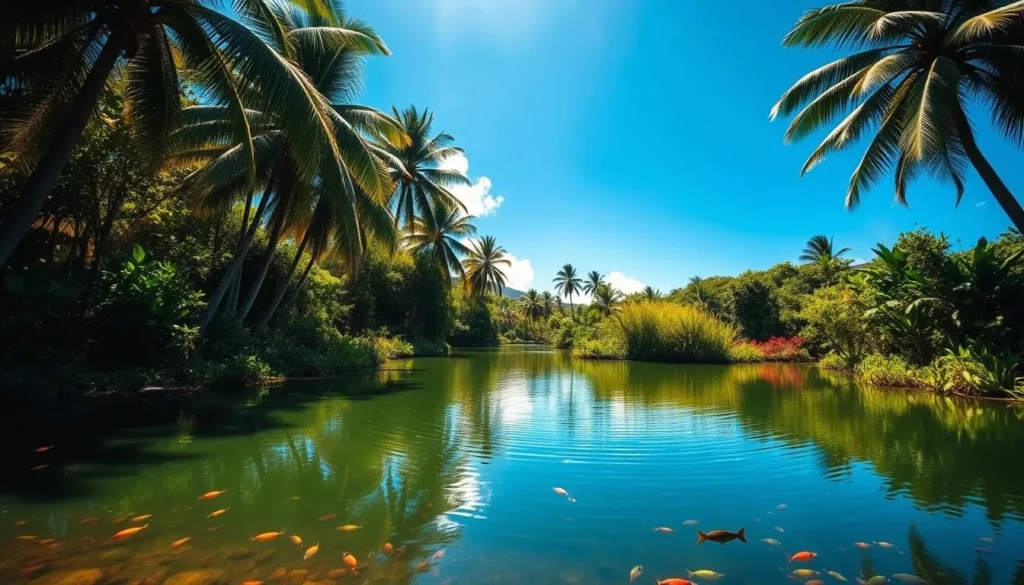
Honokohau Beach and Sea Turtles
Honokohau Beach is a picturesque spot within the park, known for its calm waters and frequent sightings of Hawaiian green sea turtles. Visitors can enjoy the beach while respecting these protected creatures and their habitat. The beach offers a serene environment for relaxation and an opportunity to connect with nature.
‘Ai’opio Fishtrap
The ‘Ai’opio Fishtrap is an ancient Hawaiian fishing technology that showcases the ingenuity and resourcefulness of the Native Hawaiian people. This fishtrap was designed to allow fish to swim over the walls during high tide and become trapped as the tide receded, providing a sustainable fishing method. Today, visitors can observe the remaining stone walls of this ancient structure, a testament to Hawaiian engineering and resource management.
The ‘Ai’opio Fishtrap not only demonstrates the advanced understanding of tidal patterns and fish behavior but also highlights the strategic location near the beach, allowing for easy access while working with natural water movements and coastal features. This ancient technology is a fascinating aspect of the park’s cultural heritage, offering insights into the lives of the people who once inhabited this area.
Trails and Hiking Opportunities
As you explore Kaloko-Honokohau National Park, you’ll discover a network of trails that offer a glimpse into the area’s rich cultural and natural history. The park is home to several trails, including the Ala Hele Ike Trail and the Ala Kahakai National Historic Trail, each providing a unique perspective on the region’s significance.
Ala Hele Ike Trail
The Ala Hele Ike Trail is one of the trails you can explore within the park. While specific details about this trail are not provided, it’s an opportunity to experience the natural beauty of the area.
Ala Kahakai National Historic Trail
The Ala Kahakai National Historic Trail is a significant part of the park’s trail system. This 175-mile route once circumnavigated the Big Island, connecting ancient Hawaiian settlements along the coast. As you walk this trail, you’ll learn about its historical importance as a transportation route for native Hawaiians, facilitating trade, communication, and cultural exchange. You’ll experience the trail’s spectacular coastal views, observe marine wildlife, and understand how this segment is part of a larger National Historic Trail system.

By exploring the Ala Kahakai National Historic Trail, you’ll be walking the same path that Hawaiian chiefs and commoners traveled for centuries, offering a tangible connection to the island’s rich cultural history.
Wildlife Viewing and Photography Tips
The park’s unique combination of historical sites, lava tide pools, and crystal-clear waters creates a photographer’s paradise. As you explore Kaloko-Honokohau National Historical Park, you’ll have numerous opportunities to capture stunning images of the local wildlife and cultural sites.
Hawaiian Green Sea Turtles (Honu)
One of the park’s most iconic residents is the Hawaiian green sea turtle, or honu. These gentle creatures can often be found basking in the sun on the lava rocks or swimming in the tide pools. To capture great photos of honu, it’s essential to maintain a safe distance and be patient, as they can be quite shy.
Bird Watching Opportunities
Kaloko-Honokohau is also a haven for bird enthusiasts, with a variety of species to spot, including migratory birds and native Hawaiian birds. Bring a pair of binoculars and a camera with a good zoom lens to capture the perfect shot. Early morning and late afternoon are the best times for bird watching, as the lighting is softer and the birds are more active.
Photography Best Practices
To make the most of your photography experience at Kaloko-Honokohau, consider the following tips:
- Capture stunning photographs by taking advantage of the unique combination of cultural sites, wildlife, and dramatic landscapes.
- Bring a camera with a zoom lens (100-500mm recommended for wildlife), extra batteries, memory cards, and a cleaning kit to handle the coastal conditions.
- Protect your camera equipment from salt spray and sand with appropriate covers, especially when photographing near the ocean.
- Time your photography sessions for early morning or late afternoon “golden hours” when the lighting is softer.
- Don’t forget to wear mineral-based, reef-safe sunscreen to protect both yourself and the marine environment.
By following these tips and being mindful of your surroundings, you can capture breathtaking images while respecting the park’s natural and cultural resources.
Essential Visitor Tips and Safety Information
Ensuring a safe and enjoyable visit to Kaloko-Honokohau involves being informed about the key visitor tips and safety measures. As you prepare for your trip, consider the following guidelines to make the most of your time at this beautiful national park.
What to Bring
When visiting Kaloko-Honokohau, it’s essential to be prepared. Bring plenty of water, sunscreen, and a hat to protect yourself from the sun. Wear comfortable shoes suitable for walking on potentially uneven terrain. Don’t forget your camera to capture the unique landscapes and wildlife.
Cultural Respect and Wildlife Protection
Be respectful of the park’s cultural and natural resources. Avoid touching or damaging ancient Hawaiian structures and artifacts. Keep a safe distance from wildlife, including the Hawaiian green sea turtles that nest in the area. Refrain from feeding or disturbing them in any way.
Weather Considerations
The weather in Kailua-Kona is generally warm and sunny year-round, with daytime highs typically ranging from 80-85°F (27-29°C). However, be prepared for brief rain showers, especially during the winter months. Protect yourself from the intense sun, particularly in exposed areas with little shade.
| Item | Description | Importance |
|---|---|---|
| Water | Stay hydrated | High |
| Sunscreen | Protect against UV rays | High |
| Comfortable Shoes | Suitable for walking | Medium |
Conclusion: Making the Most of Your Kaloko-Honokohau Experience
Exploring Kaloko-Honokohau National Historical Park is an enriching experience that combines history, culture, and nature. To make the most of your visit, plan to spend at least 2-3 hours exploring the park’s cultural significance and natural beauty.
Tips for Visiting: Consider timing your visit to include sunset viewing from the harbor area, which offers spectacular views as the sun dips into the Pacific Ocean. Combine your visit with other nearby attractions on the Big Island’s Kona coast for a full day of exploration.
By following the tips provided by the park service, you can ensure a safe, respectful, and enriching experience. Take time to reflect on the ingenuity of the ancient Hawaiians and enjoy the unique opportunity to experience Hawaii’s natural and cultural heritage in one accessible location.
The above is subject to change.
Check back often to TRAVEL.COM for the latest travel tips and deals.


